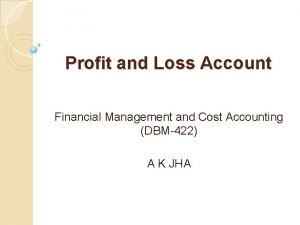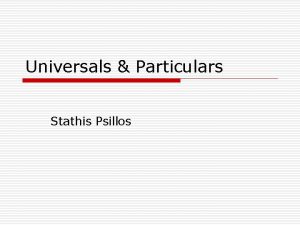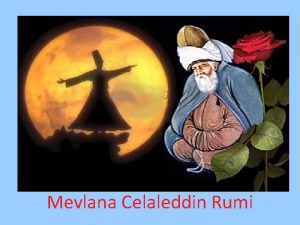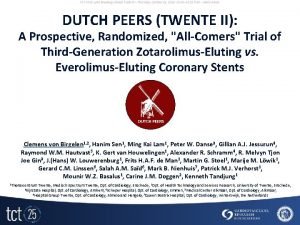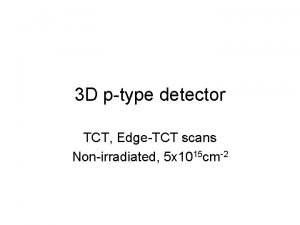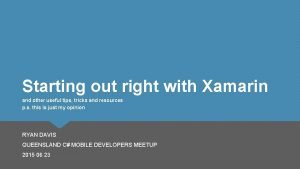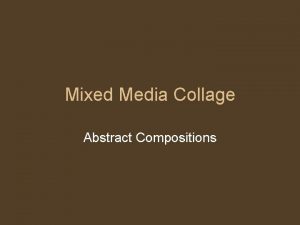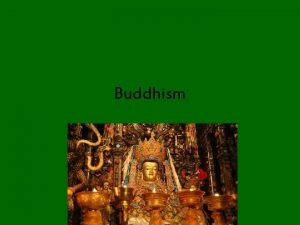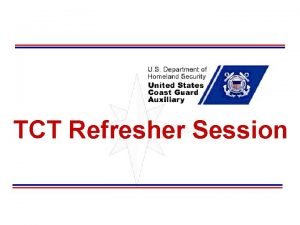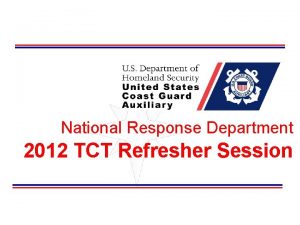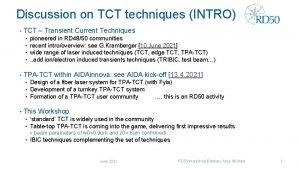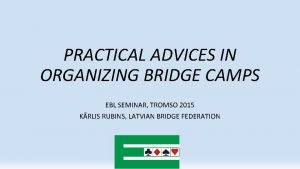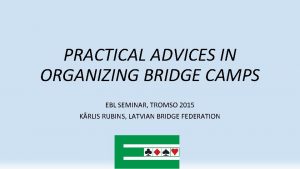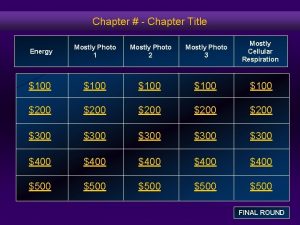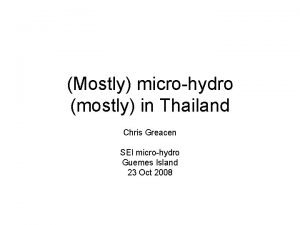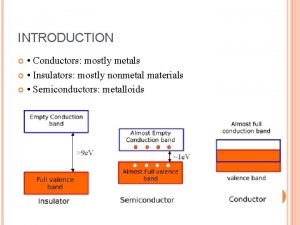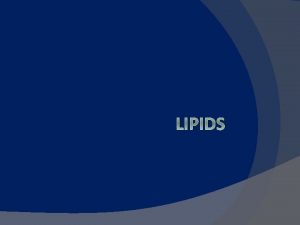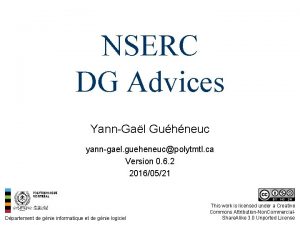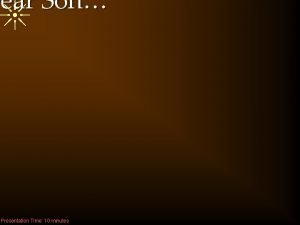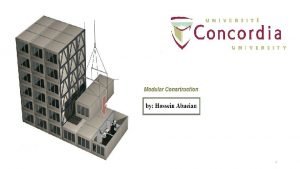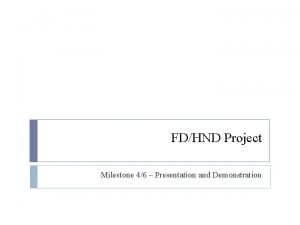Practical advices for using TCT mostly for Particulars
























- Slides: 24

Practical advices for using TCT (mostly for Particulars setups) G. Kramberger Jožef Stefan Institute & Particulars

Beam monitoring 17/10/2016 2 G. Kramberger, Practical advices for using TCT, 2 nd TCT workshop

Why beam monitoring? � Charge measurements ◦ ensure that density of generated carriers doesn’t influence the field (avoid plasma effect, excessive recombination …) � red laser (660 nm) is more problematic as the deposited volume is small when focused : in V~3. 14*7 mm*3 mm~ 70 mm 3 around 1 M e-h pairs , which yields: 1. 42∙ 1016 cm-3 >> Neff (note that laser is not infinitely fast) � Infrared (1064 nm) it is rarely the case that Ne-h influences the signal (larger beam and above all much longer penetration depth) ◦ absolute scale of measured signal � In a calibrated system one should be able to measure the absolute difference in collected charge even if the intensity of the laser changes between two samples - CCE measurements � Correct for laser instabilities ◦ Variation of temperature � Over a longer period the laser power may fluctuate due to temperature changes (large DT). This is usually not significant, but it can be observed and corrected for. ◦ operation of the laser at the edge of characteristics � lasers driven to the limits of width/amplitude/repetition they can be unstable 17/10/2016 3 G. Kramberger, Practical advices for using TCT, 2 nd TCT workshop

Implementation – types of beam monitor We have developed two different systems � fiber split system (BM-01 A) � in-beam system (BM-02 A) BM-01 A Calibrated device BM device Beam splitter OPTICS Device under test BM-02 A Calibrated device BM device OPTICS 17/10/2016 4 Beam splitter Device under test G. Kramberger, Practical advices for using TCT, 2 nd TCT workshop

Fibre-split system (BM-01 A) � Fibre-split system advantages: ◦ Two inputs – many options for advanced tests � DC+ pulsed light – operation of detectors in presence of high concentration of nonequilibrium carriers � Two pulse response – response of detector within several ns (usually not possible with conventional lasers) � ◦ Simple mounting ◦ Calibrated device can be a commercial fast photodiode connected to amplifier circuitry – wide spectral sensitivity Fibre-split system drawbacks: ◦ Adjusted to a single wavelength (for now we have 1064 nm version) ◦ Requires calibration for each optics setting (using NDF, iris …changes the calibration) ◦ Prone to insertion losses – large degradation of amplitude (~10 x) Calibrated device BM device Beam splitter 17/10/2016 5 Device under test G. Kramberger, Practical advices for using TCT, 2 nd TCT workshop

17/10/2016 6 G. Kramberger, Practical advices for using TCT, 2 nd TCT workshop

In-beam system (BM-02 A) � In-beam system advantages: ◦ Mounted in-front of the optics – “transparent to” optics setting (iris, filter) ◦ A single beam monitor for all wavelengths ◦ Less losses of light – basically corresponds to mirror split ratio � In-beam system drawbacks: ◦ Requires special diodes (non-commercial) with large enough sensitive area. ◦ Problem with polarization non-maintaining fibers –> ratio of split light depends on the fiber routing… - difficult to make absolute calibration. BM sensor DUT 17/10/2016 7 Amplifier (matched risetime, duration, amplitude) OPTICS G. Kramberger, Practical advices for using TCT, 2 nd TCT workshop

17/10/2016 8 G. Kramberger, Practical advices for using TCT, 2 nd TCT workshop

17/10/2016 9 G. Kramberger, Practical advices for using TCT, 2 nd TCT workshop

17/10/2016 10 G. Kramberger, Practical advices for using TCT, 2 nd TCT workshop

Integration in the DAQ Beam monitor is integrated in the PSTCT software since V 1. 61 ◦ a free channel is required in your DRS/oscilloscope ◦ DAQ uses charge/peak from BM to get the laser intensity (more complex analysis possible) ◦ It writes the BM value (charge/peak) to the file in the same way as other data in front of the waveforms (x, y, z, U 1, U 2, I 1, I 2…) ◦ The BM channel can be monitored/not stored during data taking ◦ V 1. 1 of TCTAnalyse is required for analysis/loading of the data Shows current value of BM and Some statistics over last N of events Settings tab for the BM 17/10/2016 11 G. Kramberger, Practical advices for using TCT, 2 nd TCT workshop

Integration in the DAQ � � � One can select time interval Statistics on precision Mode: integral/amplitude 17/10/2016 12 G. Kramberger, Practical advices for using TCT, 2 nd TCT workshop

Example of use � day � � 17/10/2016 13 Temperature oscillations in the lab (IFAE) cause variation of signal in DUT The same oscillation is measured in BM with exactly the same pattern When corrected for variation the signal stability is very good within 3%! G. Kramberger, Practical advices for using TCT, 2 nd TCT workshop

Temperature dependence of laser output 17/10/2016 14 G. Kramberger, Practical advices for using TCT, 2 nd TCT workshop

Gain of the laser depends on the temperature: � the reason is in one of the driver stages the transistor for voltage regulation has a temperature dependent leakage which translates in to shift of threshold for current pulse � some drivers have very small T effect/none, but some have sizeable T effect in non thermally stabilized laboratory � Recent lasers have a compensation circuitry that mitigates the effect � If you have an older laser which is operated in thermally not stable environment the stabilization circuitry can be added Measured in fully depleted p-n sample of standard thickness with IR laser deliberate strong cooling 17/10/2016 15 G. Kramberger, Practical advices for using TCT, 2 nd TCT workshop

Beam locator 17/10/2016 16 G. Kramberger, Practical advices for using TCT, 2 nd TCT workshop

� � � Finding a small structure of ~100 x 100 mm 2 with a beam of infrared light for e. g. Edge-TCT measurements is a problem – those who have tried know it – scanning of larger area with high power is very time consuming The visible light is a far more appropriate to hit small cell sizes. So the XY position of the spot is determined by red laser and then the fiber is changed to IR laser. If you don’t have a red fiber coupled laser, a beam locator fiber coupled red CW laser is an option (cheap solution). ◦ It is biased by standard Laser PS ◦ Uses a laser diode and multi mode (50 mm core) laser fiber You will be able to see it in lab tests. 17/10/2016 17 G. Kramberger, Practical advices for using TCT, 2 nd TCT workshop

DRS and correct averaging 17/10/2016 18 G. Kramberger, Practical advices for using TCT, 2 nd TCT workshop

� If you use DRS with very short signals make sure that you make timing correction ◦ Depending on the time of arrival of trigger wrt to DRS cell number the whole time scale can shift for up to 2 ns left and right -> when averaging is done the signal is smeared ◦ In timing correction the signal is aligned to the trigger pulse, which allows for good “average” variation of time scale CH 2 on/off correction align to constant CH 1 Threshold level on trigger pulse 17/10/2016 19 G. Kramberger, Practical advices for using TCT, 2 nd TCT workshop

PCBs for TCT 17/10/2016 20 G. Kramberger, Practical advices for using TCT, 2 nd TCT workshop

� There are specific designs for each application, but are usually versatile enough to be used for different sensors ◦ ◦ ◦ DESY board (general purpose) Liverpool H 35 SCIPP board JSI … � But: ◦ Cooling is a problem through PCB ◦ Do we need a general purpose circuit on Al 2 O 3 or Al. N ceramics that can effectively cooled? ◦ Would it be required to have a common pool of PCB designs? 17/10/2016 21 G. Kramberger, Practical advices for using TCT, 2 nd TCT workshop

6 Layer board with separate planes for all signals to reduce noise 17/10/2016 22 G. Kramberger, Practical advices for using TCT, 2 nd TCT workshop

Very good impedance mathing – no ringing 17/10/2016 23 G. Kramberger, Practical advices for using TCT, 2 nd TCT workshop

Very good impedance mathing – no ringing 17/10/2016 24 G. Kramberger, Practical advices for using TCT, 2 nd TCT workshop
 Diff between trading account and profit and loss account
Diff between trading account and profit and loss account What are particulars
What are particulars Cultural particulars examples
Cultural particulars examples International mevlana foundation
International mevlana foundation Ventilation and warming florence nightingale
Ventilation and warming florence nightingale Ask and give advice
Ask and give advice Tct 2013
Tct 2013 Tct congress
Tct congress Tct scan
Tct scan Tct
Tct Xamarin mostly using mvvm paradigm
Xamarin mostly using mvvm paradigm What the font
What the font The members of the counterculture movement were mostly
The members of the counterculture movement were mostly Where can we mostly asteroid found
Where can we mostly asteroid found Mostly multicellular
Mostly multicellular Plat worm
Plat worm Horace and morris but mostly dolores
Horace and morris but mostly dolores Five outer planets
Five outer planets Wedge shaped stab wound
Wedge shaped stab wound Collage is mostly flat or
Collage is mostly flat or A program designed to send you advertisements
A program designed to send you advertisements We are usually referring to species diversity
We are usually referring to species diversity Where is buddhism mostly located
Where is buddhism mostly located Mostly fun
Mostly fun Russia's climate is mostly _____.
Russia's climate is mostly _____.
